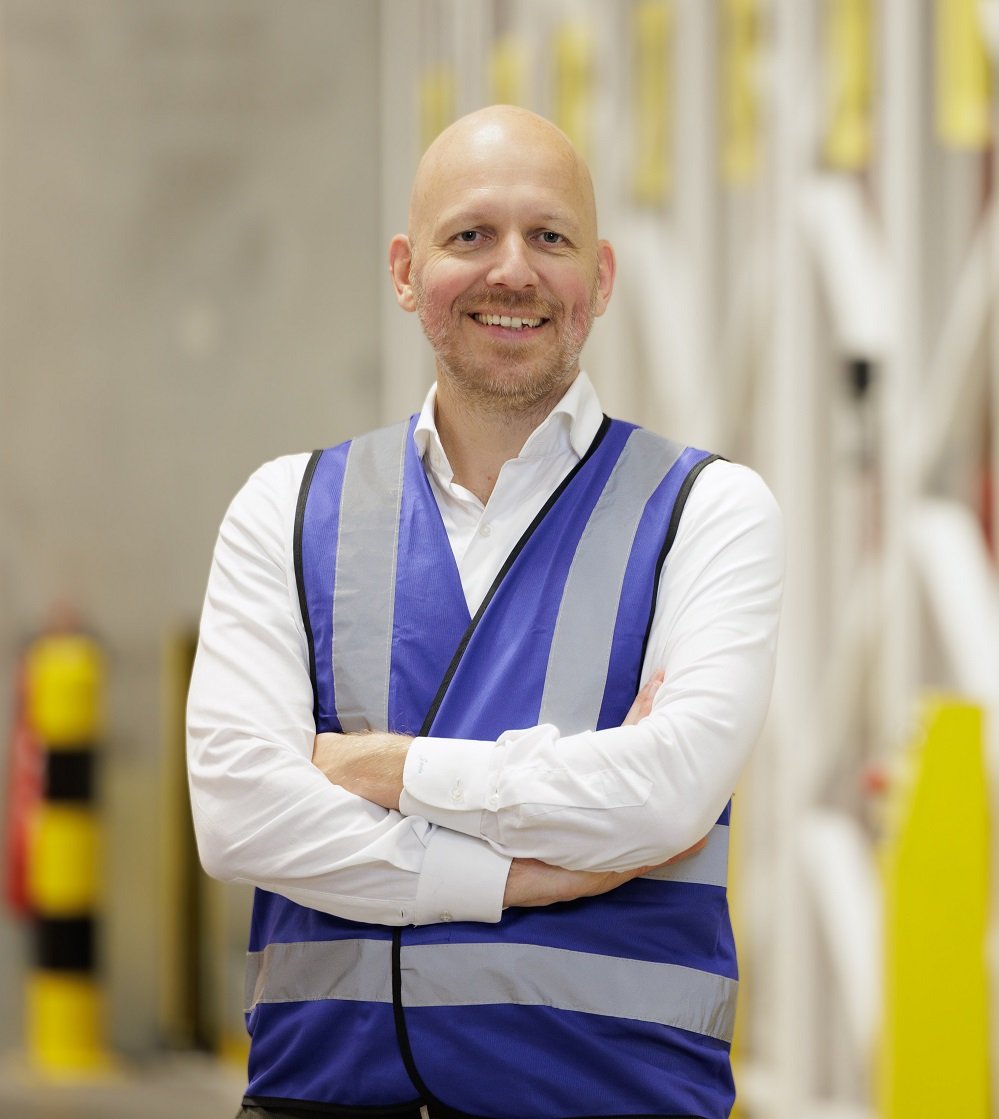3-minute read - February 14, 2024
This story is part of our 2023 Annual Report. Read the full report.
“Sustainability is a design challenge that must be solved in parallel with system cost and performance – that’s how we will make the biggest difference.”
Ton van der Net specializes in improving the energy efficiency and overall sustainability of lithography systems. He has been at the forefront of ASML’s sustainability efforts as they have grown from a team-led initiative to a corporate-level commitment that is becoming integral to how we develop our systems.
Taking the first steps
About seven years ago, in response to customers’ concerns, we started looking at the scale of the infrastructure, like cooling and power, needed to run lithography systems. These support facilities needed as much space as the production lines. When we estimated the total power they required, it was huge – around 1.3 MW for our EUV systems (as much as a few thousand Dutch homes) – and projected to grow further.
Continuing that trajectory wasn’t environmentally responsible. So, a small team of ASML engineers – including me – started exploring ways to reduce energy consumption in lithography. For example, a lot of that 1.3 MW went into cooling the system and handling the hydrogen flow used to prevent contamination build up. Was all that cooling necessary? Could we handle the hydrogen more efficiently?
Our initial list of ideas inspired ASML’s first KPI for sustainable system development. Some of these ideas looked at how the systems were used, while others required changes to the system. For example, if we redesigned the cooling features, customers could use warmer cooling water – reducing the need for power-hungry chillers.

Building a case for sustainability
Any redesign would need buy-in from the business. So, we teamed up with system engineering to engage the people who make the day-to-day design decisions. These early discussions triggered us to build a business case for our ideas. That meant thinking – and encouraging others to think – about the value of our changes beyond purely financial terms.
This is quite a radical change in mindset for any company. However, publications from the likes of McKinsey have shown that companies who perform well in sustainability typically outperform their competitors in market share and brand image. What’s more, around this time, ASML announced a corporate commitment aiming to have net zero emissions in our value chain by 2040. And the largest contribution to our current carbon footprint is the energy our systems use at customers.
We have made good progress toward that goal. Between 2018 and 2022, we reduced the energy per wafer for EUV lithography by almost 40%. And we have a roadmap for another 20% of reductions by 2025.

The new normal
Sustainability is now becoming a business driver at ASML, due partly to the corporate commitment and partly to the internal motivation of individuals. Our Green ASML employee network has over 2,000 people looking at everything from the food we serve in the cafeteria to system energy consumption. We’ve even had internal ‘Shark Tank’ style events to generate new ideas to make our whole operation more sustainable.
Many of that initial team – including myself – are still active in driving a sustainable innovation culture within ASML. We are looking to embed sustainability even more fully into ASML’s product generation process, because you get better results faster and at lower cost if you build sustainability in from the start. To this end, our system design specifications – the handbook for what we want to achieve in a new system – now include maximum power consumption and a power breakdown as standard. By making sustainability part of our standard processes, we have switched on the innovation power of 20,000 ASML engineers.
A greener future
We are also looking at the materials we use to build our systems. There are standard ways of estimating the sustainability of materials in terms of their energy cost to produce and recyclability, but they are very approximate. We want to develop more accurate methods based on actual materials and processes. The sustainability of materials could then become another driver for innovation.
Sustainable innovation is becoming part of our business as usual, just another design specification for our engineers alongside performance, cost and time to delivery. Because, in the end, all those factors must be balanced. Our sustainability efforts only have value if they come in a system that meets our customers’ business needs.
This story comes from our 2023 Annual Report which features people at ASML and the impact they are having on the company and society.
Click on one of the people profiles below to read more stories.
STORIES
People of ASML





